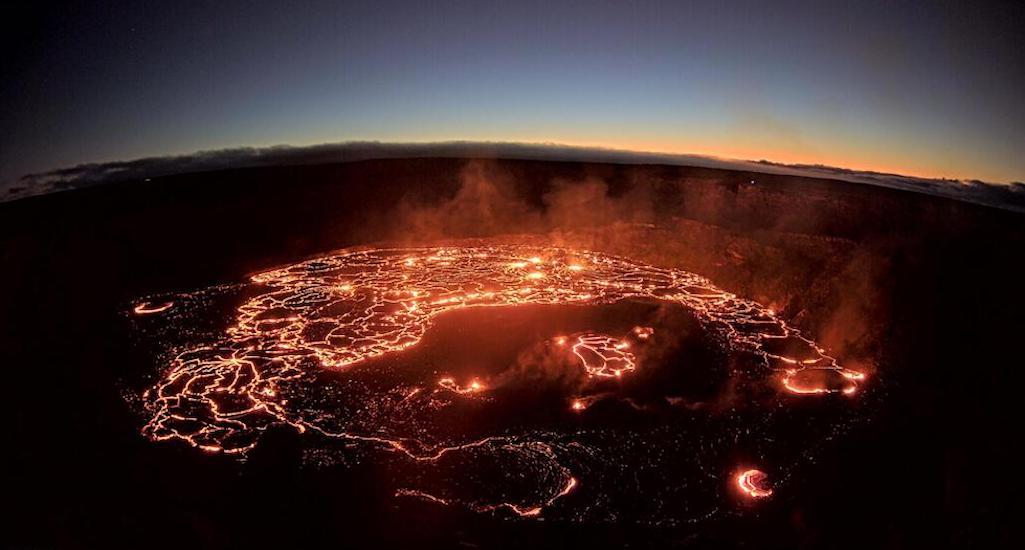
The Kīlauea volcano at Hawai'i Volcanoes National Park has resumed erupting. This image was taken Friday morning at shortly after 6 a.m. local time/USGS
After a few weeks' break, the Kīlauea volcano at Hawai'i Volcanoes National Park has resumed its eruptions with some spectacular lava fountains rising more than 160 feet into the sky.
The volcano came to life in late September 2021 and continued erupting until December 9, 2022, and the next day Mauna Loa volcano, which in November had begun erupting after a nearly 40-year break, stopped as well.
According to the U.S. Geological Survey's Hawaiian Volcano Observatory, Kīlauea began erupting Thursday afternoon just after 4:30 p.m. local time.
"All activity is confined to Kīlauea summit region, within Hawai‘i Volcanoes National Park. There are no indications of activity migrating out of the summit region," said a HVO release. "Multiple minor fountains are active in the central eastern portion of Halema‘uma‘u crater floor; the largest lava fountain is consistently about 10 meters (32 feet) high. Fountain bursts up to 30 meters (98 feet) high occurred around 7:45 p.m. and there were several bursts up to 50 meters (164 feet) high during the initial part of the eruption. Lava flows have inundated much of the crater floor (which is nearly 300 acres or 120 hectares). As of approximately 7:30 p.m. about 10 meters (32 feet) depth of new lava had been added to the crater floor."
The release added that Kīlauea's eruptions have not had any impact on Mauna Loa, the world's largest active volcano that towers over Kīlauea in the park.
"Mauna Loa remains quiet," the observatory noted.
Kīlauea’s eruption was occurring within a closed area of the national park.
"High levels of volcanic gas are the primary hazard of concern, as this hazard can have far-reaching effects down-wind," noted HVO scientists. "Large amounts of volcanic gas—primarily water vapor (H2O), carbon dioxide (CO2), and sulfur dioxide (SO2)—are continuously released during eruptions of Kīlauea volcano. As SO2 is released from the summit, it will react in the atmosphere to create the visible haze known as vog (volcanic smog) that has been observed downwind of Kīlauea."
Kīlauea erupted for months in 2018, with the national park suffering significant damage, as did surrounding communities. Those eruptions covered nearly 13 square miles of the island with lava flows, which also forced thousands to evacuate their homes; more than 700 homes were destroyed by the eruptions. Damage estimates ran to at least $100 million, with the park's Crater Rim Drive significantly cracked and buckled while the park's Jagger Museum sustained significant structural damage from thousands of related earthquakes.


